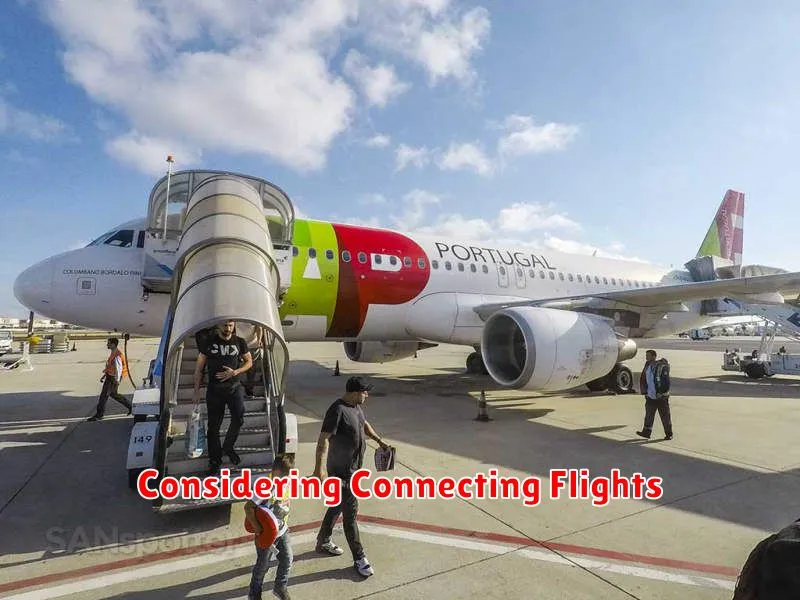Are you dreaming of exploring Europe’s charming cities, breathtaking landscapes, and rich history? But the cost of travel, especially flights, can seem daunting. Don’t let budget constraints hold you back! Unlocking Europe on a Budget: Your Guide to Finding the Cheapest Flights in 2024 is your ultimate resource for navigating the world of affordable airfare and making your European travel dreams a reality. We’ll guide you through the tips, tricks, and strategies that savvy travelers use to find the best flight deals, helping you save money without sacrificing the adventure.
From understanding the best time to book and flexible travel dates to utilizing search engines and budget airlines, we’ll delve into the secrets to securing cheap flights to Europe in 2024. Whether you’re a seasoned traveler or planning your first European escapade, this comprehensive guide will equip you with the knowledge to unlock incredible travel experiences without breaking the bank.
Understanding Flight Prices to Europe
Navigating flight prices to Europe can be a daunting task, especially with the ever-changing dynamics of airfare. Understanding the factors that influence prices is crucial for securing a budget-friendly flight. Seasonality plays a significant role, with peak travel periods like summer and holidays driving prices up. Day of the week matters too, with flights typically cheaper on weekdays compared to weekends. Time of day also impacts pricing, with early morning and late-night flights often offering better deals.
Beyond these general principles, specific routes and airlines influence pricing. Popular routes with high demand tend to be more expensive, while less-traveled routes offer potential savings. Choosing budget airlines over full-service carriers can also significantly impact your bottom line. It’s also important to consider connecting flights, which might seem cheaper initially but can add additional costs for baggage and potential delays.
Armed with this knowledge, you can make informed decisions and potentially find the best deals. Flexibility is key when it comes to flight prices; being open to different departure dates and times can often lead to lower fares. Booking in advance can also be beneficial, especially for popular travel periods, as fares tend to rise closer to departure dates. However, keeping an eye out for last-minute deals can sometimes yield unexpected savings.
Understanding flight prices to Europe involves considering a multitude of factors, from seasonality to specific routes and airlines. By embracing flexibility, researching different airlines, and exploring various booking windows, you can maximize your chances of securing a budget-friendly flight to the continent of your dreams.
Best Time to Book Cheap Flights to Europe
Navigating flight prices can feel like a game of chance, especially when it comes to traveling to Europe. But don’t worry, with a little knowledge and planning, you can snag some amazing deals. The best time to book cheap flights to Europe varies depending on your destination and travel preferences. Generally, you’ll find the most affordable flights if you book between six to eight weeks before your departure date. This sweet spot gives you ample time to find deals without being caught in last-minute price hikes.
However, if you’re flexible with your dates, you might consider traveling during the shoulder seasons (spring and fall) for cheaper prices. During these periods, you’ll avoid the peak season crowds and enjoy pleasant weather in many parts of Europe. Conversely, if you’re looking for a summer adventure, booking your flights during the off-season (January and February) is your best bet. While winter in Europe can be chilly, you’ll find some exceptional deals on flights and accommodations.
Remember, the earlier you book, the better your chances of finding a great price. While booking six to eight weeks in advance is a good rule of thumb, don’t hesitate to search for deals even earlier. Airline websites and travel aggregators often offer discounts and promotions for booking well in advance.
Leveraging Flight Comparison Websites
Finding cheap flights to Europe is key to unlocking a budget-friendly adventure. Luckily, flight comparison websites are your best friend in this journey. These websites scour the internet, comparing prices from various airlines and travel agencies, presenting you with the most competitive options.
To maximize your savings, remember to be flexible with your travel dates. Flying on weekdays or during off-peak seasons often yields lower prices. Don’t hesitate to explore alternative airports within your desired region, as they can sometimes offer significantly cheaper fares.
Before booking, consider setting up price alerts. Most comparison websites allow you to track flight prices for specific routes, notifying you when prices drop. This allows you to capitalize on the best deals, ensuring you snag that perfect flight at the perfect price.
Finally, don’t forget to compare different airlines. Some websites offer advanced filtering options allowing you to sort results based on criteria like baggage allowances, flight duration, and even the type of aircraft. This helps you make an informed decision based on your individual needs and preferences.
Exploring Budget Airlines for European Travel
When it comes to exploring Europe on a budget, budget airlines are your best friends. These carriers offer incredibly affordable fares, making it possible to hop between cities and countries without breaking the bank. But navigating the world of budget airlines can be a bit tricky, so here’s what you need to know:
1. Know Your Options: The European budget airline landscape is vast, with popular names like Ryanair, EasyJet, Wizz Air, and Vueling. Research each airline’s route network, baggage policies, and additional fees to find the best fit for your travel style.
2. Flexibility is Key: Budget airlines often offer the cheapest fares for flights on weekdays or during off-peak seasons. Be flexible with your travel dates to snag the best deals.
3. Factor in Hidden Costs: While the initial ticket price might seem appealing, don’t forget to factor in additional costs such as checked baggage fees, priority boarding, and in-flight snacks and beverages.
4. Small Airports, Big Savings: Budget airlines frequently operate from smaller, less-congested airports. This can sometimes mean longer travel times to and from the city center, but the savings are often worth it.
5. Read the Fine Print: Pay close attention to the airline’s terms and conditions, particularly regarding baggage allowance, seat selection, and cancellation policies.
6. Embrace the Budget Experience: Budget airlines prioritize efficiency. Expect basic amenities and a no-frills experience.
7. Combine and Conquer: Consider using a mix of budget and full-service airlines for your European adventure. Budget airlines can help you get to your first destination, while full-service airlines can be more convenient for longer journeys or when extra amenities are desired.
By understanding the ins and outs of budget airlines, you can significantly reduce your travel expenses and make your European dreams a reality. Happy travels!
Shoulder Season: Europe’s Hidden Gem for Budget Travelers
If you’re looking to explore Europe on a budget, the shoulder season (the periods between peak tourist seasons) is your secret weapon. This magical time, spanning from April to May and September to October, offers a delightful combination of pleasant weather, fewer crowds, and significantly lower prices for flights, accommodations, and attractions.
Imagine strolling through iconic landmarks like the Eiffel Tower or the Colosseum with minimal queues, enjoying sunny days without the sweltering summer heat, and experiencing the charm of local cafes and markets without the overwhelming crowds. The shoulder season provides a unique opportunity to truly immerse yourself in the authentic European experience without breaking the bank.
Beyond the perks of fewer crowds and lower prices, the shoulder season presents a chance to discover hidden gems that may be overlooked during peak season. From quaint villages to picturesque countryside landscapes, you’ll have the freedom to explore at your own pace and uncover authentic experiences that are often overshadowed by the throngs of tourists.
So, if you’re looking to make the most of your budget and experience the magic of Europe, consider embracing the shoulder season. It’s a time when Europe reveals its true charm and offers an unforgettable journey without the hefty price tag.
Alternative Airports: Your Ticket to Savings
Europe is a treasure trove of history, culture, and breathtaking scenery. However, the allure of exploring this continent can sometimes be overshadowed by the cost of airfare. Luckily, there’s a secret weapon in your quest for budget-friendly travel: alternative airports.
Many European destinations are served by multiple airports, with smaller, less-popular ones often offering significantly lower prices. By flying into these alternative airports, you can save a considerable amount of money on your flights, freeing up funds for more exciting experiences during your trip.
Here’s how to leverage this strategy:
- Research thoroughly: Before booking, explore all airports serving your destination. Compare flight prices across different carriers and consider the distance from the airport to your final accommodation.
- Be flexible with your destination: Sometimes, choosing a slightly different city or town can offer greater savings. Consider exploring nearby destinations that might have more affordable flight options.
- Utilize travel search engines: Leverage tools like Google Flights, Skyscanner, and Momondo to compare prices across multiple airlines and airports.
- Factor in transportation costs: While flights might be cheaper at alternative airports, account for the additional travel time and cost to reach your final destination. Consider public transportation, taxis, or car rental options.
By embracing the power of alternative airports, you can unlock a world of savings on your European adventure. It’s a simple yet effective way to maximize your budget and experience the wonders of Europe without breaking the bank.
Signing Up for Airline Newsletters and Deal Alerts
One of the simplest yet often overlooked ways to find cheap flights is by signing up for airline newsletters and deal alerts. These services directly deliver deals and special offers to your inbox, keeping you informed about flash sales, price drops, and other exciting opportunities. Many airlines have dedicated sections on their websites where you can subscribe to these alerts, often allowing you to specify your preferred destinations, travel dates, or even budget.
By subscribing to these alerts, you are essentially giving yourself a front-row seat to the best flight deals. Many airlines offer exclusive deals and promotions only to their subscribers, meaning you could snag amazing fares before anyone else.
Key tip: Don’t be afraid to sign up for multiple airlines, as this increases your chances of finding a bargain. Remember to regularly check your inbox to avoid missing out on any incredible deals.
Round-Trip vs. One-Way Flights: Unveiling the Cheapest Option
When planning your European adventure, one of the first decisions you’ll face is whether to book a round-trip or one-way flight. While round-trip flights often seem like the obvious choice, one-way flights can sometimes be the cheaper option, particularly when traveling between popular European destinations. So, how do you know which is the best option for your budget? Let’s break down the pros and cons of each:
Round-Trip Flights:
Round-trip flights offer convenience and a fixed itinerary, making them a popular choice for those who prefer a structured trip. They often come with a price advantage, as airlines bundle the two flights together. However, you’re locked into your return date, limiting flexibility for unplanned adventures or last-minute changes.
One-Way Flights:
One-way flights provide greater freedom and flexibility. You can choose different airlines for your outbound and return trips, allowing you to potentially snag better deals. This flexibility also allows you to extend your trip or change your itinerary on the fly. However, the risk of higher costs comes with this freedom. One-way flights are often more expensive than round-trip flights when purchased individually, especially if you’re booking last-minute.
The Verdict:
The cheapest option depends heavily on your travel dates, destination, and your desire for flexibility. For budget travelers, consider booking separate one-way flights to find the most competitive prices, particularly if you’re traveling between popular European destinations. However, if you prefer a fixed itinerary and value the convenience of a round-trip, it can still be a good option, especially if you book in advance.
Remember, there are numerous factors influencing flight prices, including the time of year, day of the week, and airline competition. It’s always recommended to research and compare prices thoroughly on different websites before making a decision.
Maximizing Travel Rewards Programs
Earning and redeeming travel rewards can be a game-changer when it comes to conquering Europe on a budget. Credit card rewards programs are your secret weapon, allowing you to amass points or miles through everyday spending, which you can then redeem for flights, hotels, and other travel expenses.
Start by choosing a credit card with a generous sign-up bonus and strong rewards structure. Look for cards that offer bonus points or miles for travel-related purchases, like flights, hotels, and car rentals. Some popular options include the Chase Sapphire Preferred, the Capital One Venture X Rewards Credit Card, and the American Express Gold Card.
Once you’ve chosen your card, make it your primary card for all your travel-related expenses. Maximize your points by taking advantage of bonus categories. This could include spending on flights, dining, or online purchases. Remember, always use your card responsibly and pay your balance in full each month to avoid interest charges.
In addition to credit card rewards programs, consider joining airline and hotel loyalty programs. These programs often offer bonus miles or points for flights, hotels, and other travel expenses. You can also earn miles or points by shopping through their online portals or by participating in their co-branded credit cards.
The key to maximizing travel rewards programs is strategic planning. Track your points and miles, and set realistic goals for your travel. Before booking your flights or hotels, make sure to check if you can redeem your rewards for a discount or even a free trip. By utilizing travel rewards programs wisely, you can unlock the incredible experiences that Europe has to offer without breaking the bank.
Packing Light: Avoiding Baggage Fees
When traveling on a budget, baggage fees can quickly add up and eat into your precious travel funds. Packing light is essential for keeping costs down and enjoying a stress-free journey. Here are some tips to help you avoid those pesky baggage fees:
Choose a Carry-On: Opt for a carry-on-sized suitcase or backpack that meets the airline’s size and weight restrictions. This will save you a significant amount of money and eliminate the hassle of checking your luggage.
Pack Strategically: Roll your clothes instead of folding them to maximize space in your bag. Use packing cubes to compress and organize items. Only bring essentials and consider versatile pieces that can be worn multiple ways.
Prioritize Essentials: Think about what you truly need for your trip. For example, can you buy toiletries at your destination? Can you wear multiple outfits without needing extra clothes? The less you pack, the lighter your bag will be.
Check Airline Policies: Before you pack, familiarize yourself with your airline’s baggage policies. They often provide specific size and weight restrictions for carry-on luggage. Be aware of any restrictions on liquids and prohibited items.
By following these tips, you can avoid expensive baggage fees and stay within your budget. Packing light is a great way to keep costs down, reduce stress, and ensure a smoother travel experience.
Being Flexible with Your Travel Dates and Destinations

One of the most effective ways to unlock Europe on a budget is by being flexible with your travel dates and destinations. While having a dream destination in mind is great, consider opening up your search to include nearby cities or alternative dates. By broadening your horizons, you can often snag significantly cheaper flights, particularly during shoulder seasons.
Instead of booking flights for peak season, consider traveling during the shoulder season, which typically falls in the spring (April-May) or autumn (September-October). During these periods, tourist crowds are thinner, prices are generally lower, and the weather is still pleasant. Additionally, exploring destinations outside of major tourist hotspots during the peak season can lead to surprisingly affordable prices.
Utilizing online flight search engines with flexible date options is a must. These tools allow you to see price fluctuations for flights within a specific date range, helping you identify the most affordable days to travel. By being open to traveling on weekdays or even mid-week, you can often discover substantial savings compared to weekend flights.
Don’t limit yourself to the most popular destinations. Often, less well-known cities or towns in Europe offer a charming alternative and can be considerably cheaper. By exploring hidden gems, you can discover authentic experiences, enjoy lower costs of living, and create a more unique travel story.
Considering Connecting Flights

While direct flights may seem appealing, connecting flights often offer significant savings, especially when flying to Europe. Consider these factors when deciding if a connection is right for you:
Pros:
- Lower Prices: Connecting flights often provide the most affordable options, especially for budget airlines and off-peak seasons.
- More Destinations: Connecting flights offer access to a wider range of destinations, particularly those not served by direct flights from your origin.
- Flexibility: Connecting flights can offer greater flexibility in your travel itinerary, allowing you to explore different cities or countries on a single trip.
Cons:
- Longer Travel Time: Connecting flights add additional time to your journey, including layovers and possible delays.
- Potential for Delays: Missed connections can happen, potentially disrupting your travel plans.
- Luggage Handling: If your bags are checked, make sure to track their arrival and potential delays during transfers.
Tips for Connecting Flights:
- Choose a reputable airline: Look for airlines with a good track record of punctuality and efficient connections.
- Opt for short layovers: Aim for layovers under 2 hours, especially for international connections.
- Check for luggage restrictions: Ensure your luggage meets size and weight restrictions for both flights.
- Consider the airport layout: Look for airports with smooth and easy transfer processes.
Ultimately, whether a connecting flight is right for you depends on your individual needs and priorities. Consider your budget, time constraints, and travel preferences to make an informed decision.
Last-Minute Deals: Risky but Rewarding

The allure of a last-minute flight deal is undeniable. Picture this: you’re staring at your computer screen, a wave of excitement washing over you as you witness a drastic price drop for a flight to your dream European destination. The temptation to book is almost irresistible, but remember, these deals come with their own set of risks.
On the one hand, snatching a last-minute deal can be incredibly rewarding. You might find yourself saving hundreds of dollars on your airfare, giving you more budget to explore Europe’s hidden gems. Imagine sipping espresso in a charming Italian cafe or strolling through the bustling streets of Paris, all thanks to a lucky last-minute find.
However, the gamble lies in the potential drawbacks. Flexibility is key when going for last-minute deals. You may be forced to adjust your travel dates or accept less-than-ideal flight times. Limited availability and a lack of choice in terms of airlines or airports are also common pitfalls.
The bottom line is, last-minute deals can be a great way to snag cheap flights to Europe, but they require a willingness to be flexible and a dash of calculated risk. Do your research, weigh the pros and cons, and if the deal aligns with your travel goals, go for it! You might just find yourself on a budget-friendly adventure across Europe, all thanks to that last-minute flight deal.
Student Discounts and Other Special Offers

You might be surprised to know that Europe is full of student discounts! These are available for both travel and activities. You just need to show your student ID to get them. For example, you can often get discounts on flights and train tickets with companies like Ryanair, Easyjet, and Eurostar. Some countries, like Germany, even offer special travel passes designed for students.
Beyond travel, you can find student discounts on museum entry fees, attractions, and even restaurants. Some cities have specific programs, like the ISIC card, which gives you access to exclusive discounts on attractions and travel. Check out the “Student Deals” section on the European Youth Hostel Association website for more ideas.
Remember to look for special offers! Many airlines, hostels, and even attractions run seasonal promotions. Subscribe to their newsletters and follow them on social media to stay in the loop. You can also check out travel blogs and forums for tips on how to find hidden gems and secret deals.

